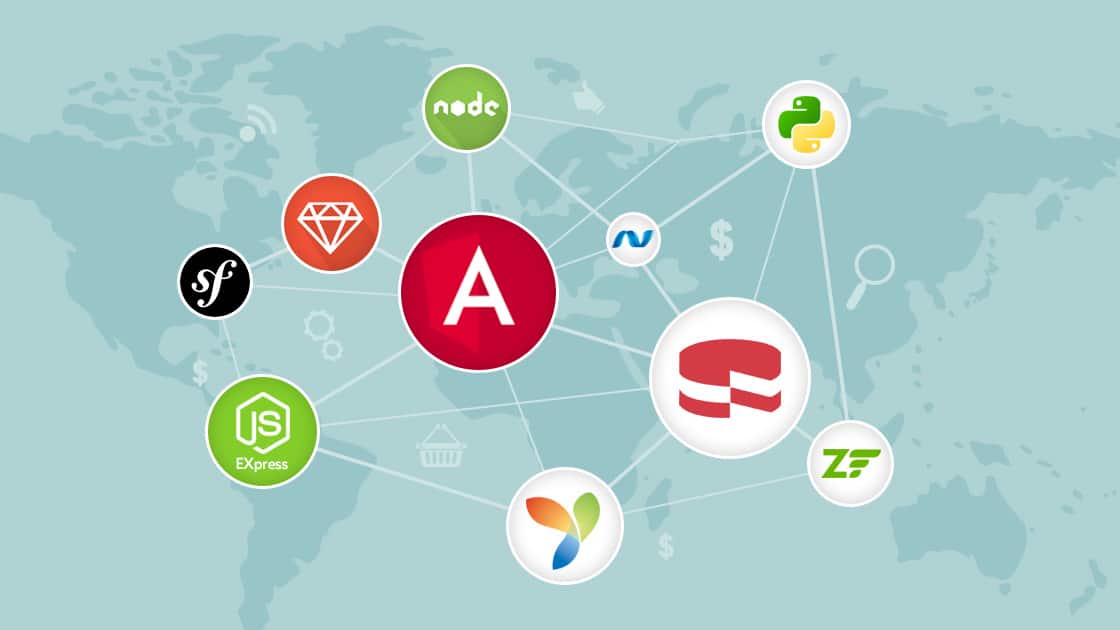Web applications have come a long way regarding user experience, flexibility, and responsiveness. Users demand seamless application experiences that can adapt to their needs on the fly, and the backend developer makes this happen. To build your backend in such a way that it can support all these features, you need to use the proper framework.
Yes, because backend frameworks automate some important web development aspects, making the development process easier and quicker. More precisely, a backend web framework is a library of models and tools that builds the architecture of a website, software, web application, or mobile app.
So, here we have listed the top 6 backend development frameworks for interactive web apps. You can choose any of these frameworks depending on your requirements. Now, take a look at this list.
Top Backend Frameworks For 2023
1. Spring Framework
Java is always regarded as an evergreen programming language. Its widespread usage is seen in backend development, and Spring also belongs to Java frameworks.
It was introduced in 2002, and now it ranks among the top backend frameworks for building production-grade spring-based and standalone web applications.
Businesses should consider using this framework for their app projects because of the easy learning curve, plus the framework omits various configuration overheads. You can get many valuable functionalities like caching, configuration management, transaction management, advanced security, and monitoring when you use its projects like Spring Cloud, Spring Boot, Spring Security, etc.
Benefits of Spring Framework:
- Solves real-time technical problems
- Contains multiple modules, such as WEB MVC, AOP, Context, IOC, DAO, and ORM.
- Create secure, scalable, and robust enterprise-based web applications
2. Django
Django belongs to the Python community and is popularly used in web development. It’s based on the Don’t Repeat Yourself (DRY) principle, thus focusing on code reuse. This boosts the speed of the application development process.
Being a popular Python framework, Django comes with user-friendly features and an easy learning curve. It’s one of the most popular full-stack frameworks that provides out-of-box functionalities like REST API support. Also, it provides robust security and makes itself ideal for enterprise web application development.
Benefits of DjangoFramework:
- Backward compatibility as it supports older versions and makes use of its previous formats and features.
- Independent and contains a completed set in itself.
- DevOps compatibility as it uses a continuous delivery methodology to increase the system’s efficiency.
- Highly secure and up to date.
3. Express JS
JavaScript is the world’s most widely used programming language. With Node.js’s emergence, JavaScript’s popularity has significantly increased in the backend development community. Node Js has become one of the top names in the tech domain.
That’s why Express JS was launched in 2010 specifically for Node programmers. It’s a minimal Node.js framework used for developing highly flexible applications. So, If you are on the lookout for full-stack development from the front to the backend to the mobile app development, then Express JS can be the right fit for you.
Benefits of Express Framework:
- Develops efficient mobile apps
- Saves almost 50% of coding time
- Builds APIs and applications with ease
- Provides zero buffering
4. ASP.NET Core
ASP.NET’s successor, ASP.NET Core, is an open-source, platform-independent framework that builds web applications on the Dotnet platform. It is considered one of the high-performing backend frameworks.
Basically, ASP.NET Core is a united version of ASP.NET MVC and ASP.NET Web API into a programming module. This makes the framework more powerful.
Benefits of ASP.NET Core Framework:
- Architected for testability
- A unified story for creating web UI and APIs.
- Develop applications for Windows, macOS, and Linux.
- Contains razor pages, making coding page-focused scenarios simpler and more productive.
5. Laravel
PHP is an open-source server-side scripting language used in programming languages for Backend development. Laravel is a popular PHP framework based on MVC architecture. It’s also a beginner-friendly framework with a user-friendly interface, an extensive library, and excellent API support.
With Laravel, developers can simplify the backend development process and build modern secure web applications. It’s especially true if your developers are working on non-trivial applications.
Benefits of Laravel Framework:
- Provide rapid page loading
- Provides faster time to market
- Keeps technical vulnerabilities at bay.
- Contains MVC Architecture
6. Ruby On Rails
Ruby on rails (RoR), commonly knowns as Rails, is a server-side framework with an MVC-based architecture. It is a beginner-friendly framework that has quite an easy learning curve.
However, its advantages and disadvantages are still debated, but backend developers love it worldwide for being user-friendly frameworks.
Benefits of RoR Framework:
- Time efficient as hundreds of tools available within the framework provide a quick development process.
- Strong adherence to web, application, and software development standards.
- Provides easy modifications to the existing code or add-on of the new features to the site or application.
Concluding Thoughts
That’s all it is! These are the top backend frameworks available today for web app development. You can consider these frameworks and hire backend developers accordingly. They will help you well and get you a robust business web application.









